(Listen to the radio version here.)
I can name at least one birdy reason why every month is my favorite, but August has way more than one reason for being special. Songbird and shorebird migrations ratchet up. Nighthawk migration peaks. Cedar Waxwings are suddenly everywhere. If a Mississippi Kite or Swallow-tailed Kite shows up at Hawk Ridge at all, this is the month for it. My birdbath sees maximum activity. And one of my very favorite things about August is that this is the month when a lot of birds are molting.
Feathers are amazingly strong and incredibly important for a bird’s survival, but even the most perfect feather doesn’t last forever. Northern birds need their thickest plumage in winter and their brightest colors in spring. Some of my favorite backyard birds, like Blue Jays, chickadees, and cardinals, time their molt for when they are pretty much done with the exhausting work of producing and raising young, while temperatures are balmy enough that they can do with reduced insulation for a few weeks.

Ogden Nash’s poem, “The Canary,” provides one perspective on molting:
The song of canaries
Never varies,
And when they’re moulting
They’re pretty revolting.
But what is revolting for one person may be hilarious for another. Birds have such orderly plumage most of the year that during the few awkward weeks when they’re exchanging old feathers for new, they can look pretty silly.
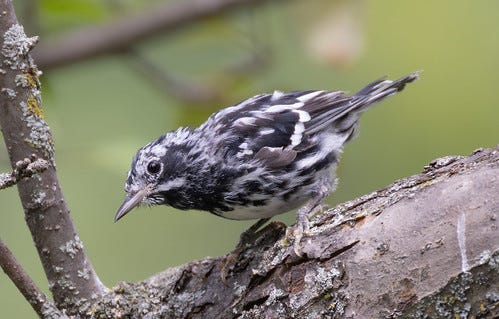
I’d be sympathetic rather than amused if this were a prolonged period, affected their health or wellbeing, or if they felt self-conscious about it, but in the same way that people in spas look ridiculous before emerging beautifully groomed, birds deal with this molting period with equanimity.
Anyone who’s had to deal with a cardinal or robin waging a territorial battle with its reflection in a window or a car mirror has seen pretty solid evidence that at least some birds don’t understand the concept of reflections.

No one has ever figured out what makes some species figure out reflections while others don’t. In the very brief video below, which I made in 2011, you can see a young male Evening Grosbeak fly into a window feeder, check out his reflection, and quickly lose interest. I have no way of actually testing whether Evening Grosbeaks recognize the image in a window as their own reflection or not. (Tragically, Evening Grosbeaks are exceptionally vulnerable to window strikes when they take off from feeders except when the feeder is actually attached to the window like this one.)
We are certain that some birds recognize their own image in a mirror. When researchers painted a little spot of white or black on captive magpies on the upper chest too close to the throat for the bird to see it directly and gave the birds a mirror, the ones with the white spot on their black feathers noticed the spot in the reflection and tried to scratch it off their own body with their foot. If the spot was black, matching the feathers, they didn’t react that way.
When I was a licensed rehabber, I loved putting a baby Blue Jay on my shoulder and taking it to a mirror for the first time. The jay would invariably study our reflections, looking back and forth between my real face and my reflected face, and then tap at its own reflection. After encountering the mirror just two or three times, Blue Jays had all figured out that the bird in the reflection was just them and they pretty much lost interest.
I got my little dog Pip in Chicago when she was eleven weeks old. We spent the first couple of nights with Russ’s sister and brother-in-law. Their guest room closet door was a floor-to-ceiling mirror. Pip saw her reflection right off the bat and ran over to sniff it, but it seemed sort of boring and predictable so she quickly moved off to investigate more interesting things.

As far as I know, we humans are the only species who not only recognize our reflection but become obsessed with it. Imagine a bird wanting to inject botulism toxin into its body so it would look different in a mirror! Unlike Narcissus, the only birds who become obsessed with their own reflection are the ones who mistake it for a competitor.
Speaking of feather loss and growth, though, I can stop worrying about the catbird who lost its tail back in early July.
Replacement feathers did not start coming in for at least three weeks, which seemed exceptionally long, but now they’re growing in quickly.
I wonder if the bird’s body didn’t have extra reserves for feather growth at that point in its breeding cycle. Last week I thought there might be a tiny stub above those rusty undertail coverts but I was afraid I might just be seeing the folded wingtips. Fortunately, by last weekend I was sure there was something there, and now the new tail is a couple inches long and getting noticeably longer every day. Soon I won’t be able to recognize it individually anymore.
I’m now seeing this catbird, its mate, and one or two fledglings from their first brood, and I’m pretty sure the parents are feeding nestlings in my dogwood, too.
Yep—August is a month of riches and ridiculousness both. How can I help but spend the month smiling?


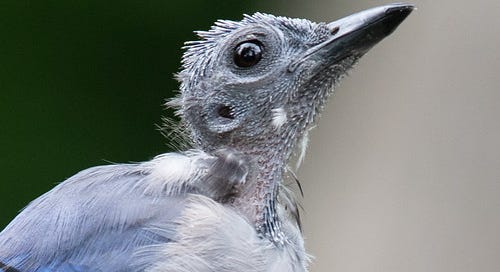


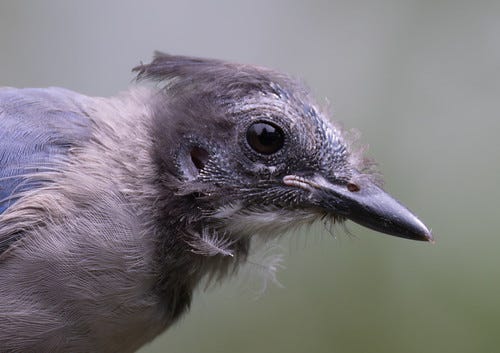

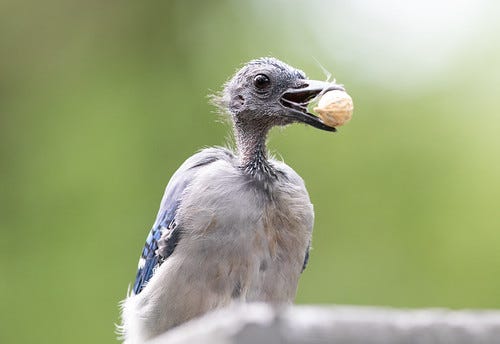
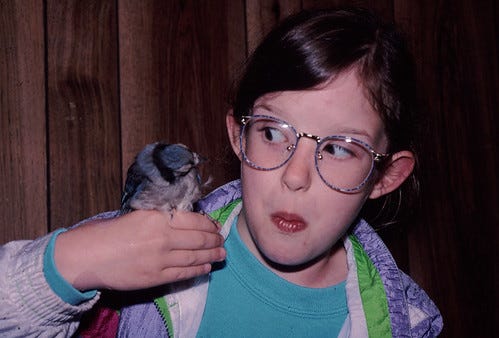
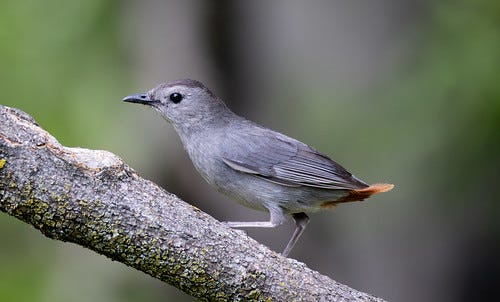

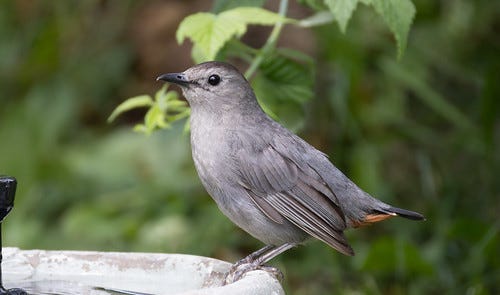
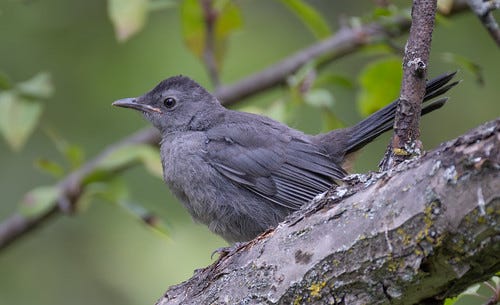

Us women would say we are having a bad hair day...or week....the birds could say they are having bad feather days!! They are really had to recognize! And some are rather funny...!
I noticed that it depends on the species, family, or order sometimes what the molting schedule. For instance, hummingbirds have two molts. One in spring, and the one now, in late summer and early fall, when they molt their bodies including head, throat, and back, but not their flight feathers or tail. That's why you see so many immature males with partially red throats.
Also, people have been noticing "ruffled" hummers at their feeders. This could be because of excessive heat in some places, but would probably be better explained by molt. I'm just guessing.
Interesting.
Thank you!